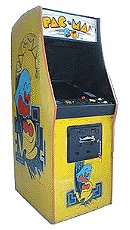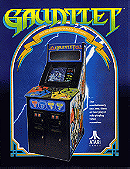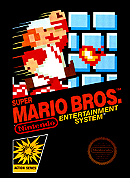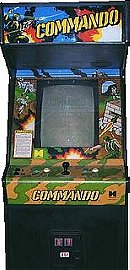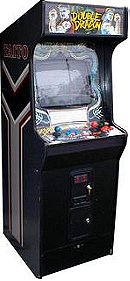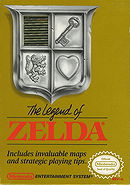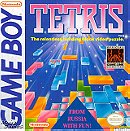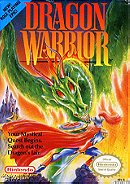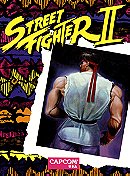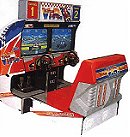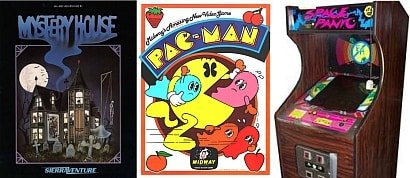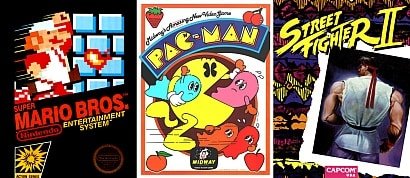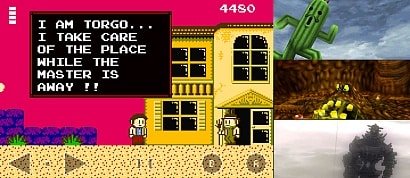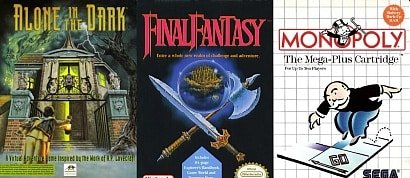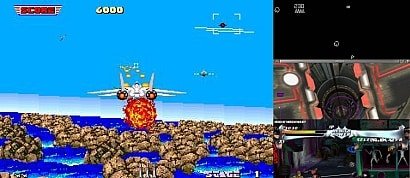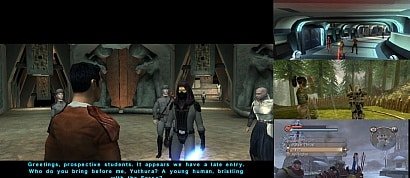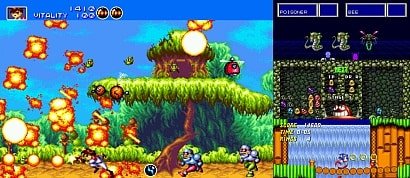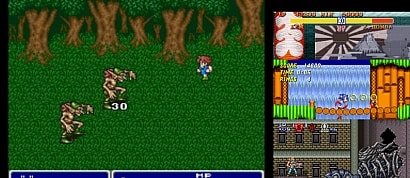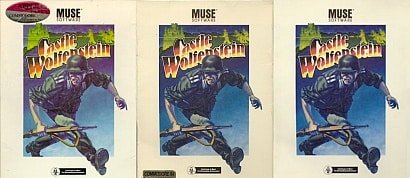15 Most Influential Games of All Time
Sort by:
Showing 15 items
Rating:
List Type:
Space Invaders - Arcade
Originally released to arcades in 1978, Taito's Space Invaders was a phenomenon: It became so popular in Japan that it caused a coin shortage. Two years later, the game was brought to the US by Midway.
 The game went on to spawn numerous sequels, but the sequels aren't what make Space Invaders influential. Space Invaders essentially created the genre that we now know as "shooters." As the arcade scene has always been about cloning successful concepts, other companies jumped in on the action almost immediately. Namco's Galaxian (1979) was Space Invaders with a twist: Instead of merely hanging out up in the sky and firing, the enemies in Galaxian would dive down at you in an attempt to collide with your ship. Galaxian gave way (in 1981) to its sequel, Galaga, which is still considered to be one of the greatest shooters ever created. In 1982 Atari's Xevious arrived in the arcades, and this game took the "space shooter" concept in yet another new direction, which quickly became the order of the day, leading to games like Capcom's 1984 release, '1942'.
The game went on to spawn numerous sequels, but the sequels aren't what make Space Invaders influential. Space Invaders essentially created the genre that we now know as "shooters." As the arcade scene has always been about cloning successful concepts, other companies jumped in on the action almost immediately. Namco's Galaxian (1979) was Space Invaders with a twist: Instead of merely hanging out up in the sky and firing, the enemies in Galaxian would dive down at you in an attempt to collide with your ship. Galaxian gave way (in 1981) to its sequel, Galaga, which is still considered to be one of the greatest shooters ever created. In 1982 Atari's Xevious arrived in the arcades, and this game took the "space shooter" concept in yet another new direction, which quickly became the order of the day, leading to games like Capcom's 1984 release, '1942'.
 The game went on to spawn numerous sequels, but the sequels aren't what make Space Invaders influential. Space Invaders essentially created the genre that we now know as "shooters." As the arcade scene has always been about cloning successful concepts, other companies jumped in on the action almost immediately. Namco's Galaxian (1979) was Space Invaders with a twist: Instead of merely hanging out up in the sky and firing, the enemies in Galaxian would dive down at you in an attempt to collide with your ship. Galaxian gave way (in 1981) to its sequel, Galaga, which is still considered to be one of the greatest shooters ever created. In 1982 Atari's Xevious arrived in the arcades, and this game took the "space shooter" concept in yet another new direction, which quickly became the order of the day, leading to games like Capcom's 1984 release, '1942'.
The game went on to spawn numerous sequels, but the sequels aren't what make Space Invaders influential. Space Invaders essentially created the genre that we now know as "shooters." As the arcade scene has always been about cloning successful concepts, other companies jumped in on the action almost immediately. Namco's Galaxian (1979) was Space Invaders with a twist: Instead of merely hanging out up in the sky and firing, the enemies in Galaxian would dive down at you in an attempt to collide with your ship. Galaxian gave way (in 1981) to its sequel, Galaga, which is still considered to be one of the greatest shooters ever created. In 1982 Atari's Xevious arrived in the arcades, and this game took the "space shooter" concept in yet another new direction, which quickly became the order of the day, leading to games like Capcom's 1984 release, '1942'.
Prelude's rating:


Pac-Man - Arcade
The idea was a simple one. You, as Pac-Man, were charged with the goal of eating every pellet in the one maze that made up the game's entire level design. Points were given for each pellet, and more points were given for random fruit, which would appear off and on throughout the game. Running freely in each maze was a cast of ghosts, complete with quirky nicknames and individual characteristics, and all were bent on the destruction of Pac-Man.
 The simplicity of the formula caught on like wildfire, and Pac-Man soon vaulted into history books as the most successful video game in history. Pac-Man's surprising success spawned a large number of arcade sequels (as well as a Saturday morning cartoon and even a television special). The most memorable of these sequels was Ms. Pac-Man, which was essentially a slightly more complex version of the original game.
The simplicity of the formula caught on like wildfire, and Pac-Man soon vaulted into history books as the most successful video game in history. Pac-Man's surprising success spawned a large number of arcade sequels (as well as a Saturday morning cartoon and even a television special). The most memorable of these sequels was Ms. Pac-Man, which was essentially a slightly more complex version of the original game.
Pac-Man is one of the most influential and important video games in history not because of its creativity or genius, but because it changed the light in which video games were seen. For the first time, a video game was more than an oddity to most: It was simple, and it was a whole lot of fun. No longer were video games restricted to arcades. They weren't just for little kids or geeks anymore either, and anybody could walk up to the machine, plunk in a quarter, and play without any previous knowledge of the game. It made people aware that video games could be fun and even cool to play. It also hinted at the future of gaming and showed that it could be a lucrative business as well.
 The simplicity of the formula caught on like wildfire, and Pac-Man soon vaulted into history books as the most successful video game in history. Pac-Man's surprising success spawned a large number of arcade sequels (as well as a Saturday morning cartoon and even a television special). The most memorable of these sequels was Ms. Pac-Man, which was essentially a slightly more complex version of the original game.
The simplicity of the formula caught on like wildfire, and Pac-Man soon vaulted into history books as the most successful video game in history. Pac-Man's surprising success spawned a large number of arcade sequels (as well as a Saturday morning cartoon and even a television special). The most memorable of these sequels was Ms. Pac-Man, which was essentially a slightly more complex version of the original game.Pac-Man is one of the most influential and important video games in history not because of its creativity or genius, but because it changed the light in which video games were seen. For the first time, a video game was more than an oddity to most: It was simple, and it was a whole lot of fun. No longer were video games restricted to arcades. They weren't just for little kids or geeks anymore either, and anybody could walk up to the machine, plunk in a quarter, and play without any previous knowledge of the game. It made people aware that video games could be fun and even cool to play. It also hinted at the future of gaming and showed that it could be a lucrative business as well.
Prelude's rating:


Pole Position - Arcade
Pole Position was created by Namco and was released in the US arcades in 1982 by Atari. The arcade cabinet, featuring a steering wheel, two-speed shifter, and a gas pedal (an additional brake pedal was part of the sit-down cabinet), was revolutionary in and of itself. It gave the game a realistic driving experience that hadn't been achieved before in the genre. However, the influence of Pole Position extends much further than the tangible realism of the carlike apparatus built into the cabinet. The game was the first to introduce the concept of checkpoints. You would have to make it back to the starting line with time remaining on the clock to continue racing--the races generally had three total laps.
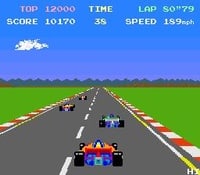 Nonetheless, perhaps the most influential contribution made by Pole Position to the racing genre was the introduction of the three-quarters, behind-the-car view. The arcade Night Driver played in first person, and games such as Sprint played from a top-down perspective. Pole Position was the first game to successfully implement the three-quarter perspective that has become standard in virtually every racing game today, from the arcade racers to the simulation driving games.
Nonetheless, perhaps the most influential contribution made by Pole Position to the racing genre was the introduction of the three-quarters, behind-the-car view. The arcade Night Driver played in first person, and games such as Sprint played from a top-down perspective. Pole Position was the first game to successfully implement the three-quarter perspective that has become standard in virtually every racing game today, from the arcade racers to the simulation driving games.
 Nonetheless, perhaps the most influential contribution made by Pole Position to the racing genre was the introduction of the three-quarters, behind-the-car view. The arcade Night Driver played in first person, and games such as Sprint played from a top-down perspective. Pole Position was the first game to successfully implement the three-quarter perspective that has become standard in virtually every racing game today, from the arcade racers to the simulation driving games.
Nonetheless, perhaps the most influential contribution made by Pole Position to the racing genre was the introduction of the three-quarters, behind-the-car view. The arcade Night Driver played in first person, and games such as Sprint played from a top-down perspective. Pole Position was the first game to successfully implement the three-quarter perspective that has become standard in virtually every racing game today, from the arcade racers to the simulation driving games.
Prelude's rating:


Gauntlet - Arcade
Brought to arcades by Atari in 1985, Gauntlet revolutionized the way multiplayer games have evolved. Starring Thor the powerful warrior, Thydra the sturdy valkyrie, Questor the nimble elf, and Merlin the mystical wizard, these characters became archetypical staples in video gaming. Their successors were readily recognizable in games such as Golden Axe, and their inspiration is captured in modern games such as Street Fighter and Final Fight, where the character selection issues of speed over strength over durability come into play.
 Gauntlet was also one of the first games with a numerical representation of longevity, the precursor to the modern health bar, which could be prolonged with the addition of extra credits. But perhaps most importantly, Gauntlet was the first game to allow simultaneous multiple-player (up to four) action, with independent entry and control accessible at any time, while also forcing cooperation through a number of unique play mechanics. The influence that the original Gauntlet has had on gaming can be felt any time you pop in a quarter to challenge someone to a beat-'em-up or pick up one of a foursome of controllers on your console.
Gauntlet was also one of the first games with a numerical representation of longevity, the precursor to the modern health bar, which could be prolonged with the addition of extra credits. But perhaps most importantly, Gauntlet was the first game to allow simultaneous multiple-player (up to four) action, with independent entry and control accessible at any time, while also forcing cooperation through a number of unique play mechanics. The influence that the original Gauntlet has had on gaming can be felt any time you pop in a quarter to challenge someone to a beat-'em-up or pick up one of a foursome of controllers on your console.
 Gauntlet was also one of the first games with a numerical representation of longevity, the precursor to the modern health bar, which could be prolonged with the addition of extra credits. But perhaps most importantly, Gauntlet was the first game to allow simultaneous multiple-player (up to four) action, with independent entry and control accessible at any time, while also forcing cooperation through a number of unique play mechanics. The influence that the original Gauntlet has had on gaming can be felt any time you pop in a quarter to challenge someone to a beat-'em-up or pick up one of a foursome of controllers on your console.
Gauntlet was also one of the first games with a numerical representation of longevity, the precursor to the modern health bar, which could be prolonged with the addition of extra credits. But perhaps most importantly, Gauntlet was the first game to allow simultaneous multiple-player (up to four) action, with independent entry and control accessible at any time, while also forcing cooperation through a number of unique play mechanics. The influence that the original Gauntlet has had on gaming can be felt any time you pop in a quarter to challenge someone to a beat-'em-up or pick up one of a foursome of controllers on your console.
Prelude's rating:


Super Mario Bros. - Famicom and NES
Super Mario Bros. for the NES was one of the few games that made our list of the 15 most influential games without debate. Many may rightfully argue that Pitfall! for the Atari 2600 was the first game to introduce 2D platforming to the world, but Super Mario Bros. kicked the genre into full gear by forcefully evolving platforming games enough to inspire endless replications over the past 16 years. Super Mario Bros. established what would become the standard gameplay and aesthetically elements in all subsequent Mario games, and it produced the video game industry's first bona fide star.
 Perhaps most importantly, with the aid of the NES, Super Mario Bros. helped save the reeling video game console industry of the early 1980s. Nintendo took a chance on a flat market and released the Nintendo Entertainment System with Super Mario Bros. as a pack-in game. The strategy worked, as many bought the NES for the sole purpose of playing Super Mario Bros.
Perhaps most importantly, with the aid of the NES, Super Mario Bros. helped save the reeling video game console industry of the early 1980s. Nintendo took a chance on a flat market and released the Nintendo Entertainment System with Super Mario Bros. as a pack-in game. The strategy worked, as many bought the NES for the sole purpose of playing Super Mario Bros.
Without Super Mario Bros. there would be no Castlevania; Metroid would be just a pipe dream; Crash would still be looking for a gig in the outback; and Sonic's addiction to lightspeed would cease to be. Structured into eight levels with four sections each, Super Mario Bros. also established how most video games in the future would be organized.
 Perhaps most importantly, with the aid of the NES, Super Mario Bros. helped save the reeling video game console industry of the early 1980s. Nintendo took a chance on a flat market and released the Nintendo Entertainment System with Super Mario Bros. as a pack-in game. The strategy worked, as many bought the NES for the sole purpose of playing Super Mario Bros.
Perhaps most importantly, with the aid of the NES, Super Mario Bros. helped save the reeling video game console industry of the early 1980s. Nintendo took a chance on a flat market and released the Nintendo Entertainment System with Super Mario Bros. as a pack-in game. The strategy worked, as many bought the NES for the sole purpose of playing Super Mario Bros.Without Super Mario Bros. there would be no Castlevania; Metroid would be just a pipe dream; Crash would still be looking for a gig in the outback; and Sonic's addiction to lightspeed would cease to be. Structured into eight levels with four sections each, Super Mario Bros. also established how most video games in the future would be organized.
Prelude's rating:


Commando - Arcade
When you examine the flood of scrolling shooters that hit the market in the late '80s and early '90s, it's pretty easy to trace the line of cookie-cutter games back to their root. With its simple one-man-against-all-odds premise and top-down vertical-scrolling format, Commando was a game that almost single-handedly inspired an entire genre. Developed by Capcom and originally released in arcades in 1985, Commando certainly wasn't the first game to introduce the now classic shooter formula, but it was definitely the game that opened the floodgates.
 Commando, which was closely followed by Ikari Warriors, was obviously inspired by Front Line. But it was the hand-drawn sprites of Commando and the revolutionary nature of the game that make Commando the obvious inspiration for later games such as Heavy Barrel, Mercs, and Time Soldiers. Additionally, Commando's one-man-army premise could also be seen in later scrolling shooters like Contra, Rush 'n' Attack, and NARC. Commando was a success not only in arcades but also on the console: It was released for just about every console available at the time, including the PC.
Commando, which was closely followed by Ikari Warriors, was obviously inspired by Front Line. But it was the hand-drawn sprites of Commando and the revolutionary nature of the game that make Commando the obvious inspiration for later games such as Heavy Barrel, Mercs, and Time Soldiers. Additionally, Commando's one-man-army premise could also be seen in later scrolling shooters like Contra, Rush 'n' Attack, and NARC. Commando was a success not only in arcades but also on the console: It was released for just about every console available at the time, including the PC.
 Commando, which was closely followed by Ikari Warriors, was obviously inspired by Front Line. But it was the hand-drawn sprites of Commando and the revolutionary nature of the game that make Commando the obvious inspiration for later games such as Heavy Barrel, Mercs, and Time Soldiers. Additionally, Commando's one-man-army premise could also be seen in later scrolling shooters like Contra, Rush 'n' Attack, and NARC. Commando was a success not only in arcades but also on the console: It was released for just about every console available at the time, including the PC.
Commando, which was closely followed by Ikari Warriors, was obviously inspired by Front Line. But it was the hand-drawn sprites of Commando and the revolutionary nature of the game that make Commando the obvious inspiration for later games such as Heavy Barrel, Mercs, and Time Soldiers. Additionally, Commando's one-man-army premise could also be seen in later scrolling shooters like Contra, Rush 'n' Attack, and NARC. Commando was a success not only in arcades but also on the console: It was released for just about every console available at the time, including the PC.
Prelude's rating:


Double Dragon - Arcade
The beat-'em-up (or walk-and-punch) game was definitely one of the most popular video game designs of the '80s and early to mid '90s. Though it's now a relative zero factor, the genre did much to set the tone for many of today's games. Elements of these comparatively primitive games often turn up in the most unlikely of places, including action games, fighting games, and even some adventure games.
It wasn't the first game to focus on the walk-and-punch gameplay style: Games like Irem's Kung Fu Master and Technos' own Renegade featured that type of gameplay up to four years prior. But Double Dragon did cast the mold that the beat-'em-up genre would continue to follow until its eventual death, arguably because of the advent of the fighting genre. More than any other game, Double Dragon did much to establish the genre's formula and to influence the way it has continued to evolve the canned "kidnapped girlfriend" setup, the endless hordes of thugs, the mighty end-level bosses, the weapon pickups, and the cooperative play. There's obviously something about this formula that just speaks to Americans, and the horde of similar games that were released in the years that followed served as further testament of their appeal.
 In any case, the public apparently lost interest in the perpetual gang-fights that were classic beat-'em-ups, when an altogether more compelling concept was born in the mid '90s: the fighting game. Ironically enough, an upgraded version of the same hardware set that powered Final Fight--the beat-'em-up genre's figurehead--allowed Capcom's designers to realize Street Fighter II, the very game that served as the first tangible piece of evidence that the video game audience had, indeed, found a more suitable outlet for aggression.
In any case, the public apparently lost interest in the perpetual gang-fights that were classic beat-'em-ups, when an altogether more compelling concept was born in the mid '90s: the fighting game. Ironically enough, an upgraded version of the same hardware set that powered Final Fight--the beat-'em-up genre's figurehead--allowed Capcom's designers to realize Street Fighter II, the very game that served as the first tangible piece of evidence that the video game audience had, indeed, found a more suitable outlet for aggression.
It wasn't the first game to focus on the walk-and-punch gameplay style: Games like Irem's Kung Fu Master and Technos' own Renegade featured that type of gameplay up to four years prior. But Double Dragon did cast the mold that the beat-'em-up genre would continue to follow until its eventual death, arguably because of the advent of the fighting genre. More than any other game, Double Dragon did much to establish the genre's formula and to influence the way it has continued to evolve the canned "kidnapped girlfriend" setup, the endless hordes of thugs, the mighty end-level bosses, the weapon pickups, and the cooperative play. There's obviously something about this formula that just speaks to Americans, and the horde of similar games that were released in the years that followed served as further testament of their appeal.
 In any case, the public apparently lost interest in the perpetual gang-fights that were classic beat-'em-ups, when an altogether more compelling concept was born in the mid '90s: the fighting game. Ironically enough, an upgraded version of the same hardware set that powered Final Fight--the beat-'em-up genre's figurehead--allowed Capcom's designers to realize Street Fighter II, the very game that served as the first tangible piece of evidence that the video game audience had, indeed, found a more suitable outlet for aggression.
In any case, the public apparently lost interest in the perpetual gang-fights that were classic beat-'em-ups, when an altogether more compelling concept was born in the mid '90s: the fighting game. Ironically enough, an upgraded version of the same hardware set that powered Final Fight--the beat-'em-up genre's figurehead--allowed Capcom's designers to realize Street Fighter II, the very game that served as the first tangible piece of evidence that the video game audience had, indeed, found a more suitable outlet for aggression.
Prelude's rating:


The Legend of Zelda - Famicom and NES
While it's immensely influential for a number of reasons, The Legend of Zelda seldom gets credit for what is perhaps its most important and practical innovation: its lithium battery. Though RPGs existed in comparative abundance on many personal computers, never before Zelda had a video game been released that required that you dedicate more than one sitting to it--to successfully complete it. The concept was altogether radical, and Nintendo was worried that it wouldn't catch on in America. Never had a game so open-ended, nonlinear, and liberating been released for the mainstream market, and Nintendo of America was downright concerned that it would go right over the public's head. Thus, it included a toll-free number that stumped players could call to have a genuine Nintendo employee talk them through any of the game's many enigmas.
 Zelda was the biggest thing to happen to the burgeoning industry in the early years of 8-bit gaming, and its influence was immediately felt. After it was released, games that allowed for character development, equipment gathering, and game saving were a possibility, and subsequent years brought with them a bevy of games that included these features. Console RPGs were born in this era, as were traditional console adventures. In truth, any game that boasts battery backup--or even a password feature--owes its very existence to Zelda. And in the days before memory cards and Memory Paks, this meant all RPGs, most simulation and strategy games, and almost any console game that let you save and restore your progress.
Zelda was the biggest thing to happen to the burgeoning industry in the early years of 8-bit gaming, and its influence was immediately felt. After it was released, games that allowed for character development, equipment gathering, and game saving were a possibility, and subsequent years brought with them a bevy of games that included these features. Console RPGs were born in this era, as were traditional console adventures. In truth, any game that boasts battery backup--or even a password feature--owes its very existence to Zelda. And in the days before memory cards and Memory Paks, this meant all RPGs, most simulation and strategy games, and almost any console game that let you save and restore your progress.
 From a game design standpoint, Zelda is influential for a number of reasons. Many computer role-playing games existed that perhaps predated it, but what Miyamoto managed to achieve with Zelda was to imbue a nonlinear (for its time, anyway) game design with the very thing that made traditional video games fun: instant gratification. If you pressed the attack button, Link would immediately attack. All the cool items you'd find in the game's nine labyrinths had immediate, real-time gameplay effects--the wand would shoot energy, the boomerang would curve through the air, and the bow would fire when and where you wanted it to. The game's design was revolutionary for its time, and it's safe to say that the game's core audience had never experienced something along its lines. Just as with every Zelda game that came after, Link's original adventure was a perpetually visceral experience, which required equal amounts of puzzle-solving ingenuity and manual dexterity.
From a game design standpoint, Zelda is influential for a number of reasons. Many computer role-playing games existed that perhaps predated it, but what Miyamoto managed to achieve with Zelda was to imbue a nonlinear (for its time, anyway) game design with the very thing that made traditional video games fun: instant gratification. If you pressed the attack button, Link would immediately attack. All the cool items you'd find in the game's nine labyrinths had immediate, real-time gameplay effects--the wand would shoot energy, the boomerang would curve through the air, and the bow would fire when and where you wanted it to. The game's design was revolutionary for its time, and it's safe to say that the game's core audience had never experienced something along its lines. Just as with every Zelda game that came after, Link's original adventure was a perpetually visceral experience, which required equal amounts of puzzle-solving ingenuity and manual dexterity.
 Zelda was the biggest thing to happen to the burgeoning industry in the early years of 8-bit gaming, and its influence was immediately felt. After it was released, games that allowed for character development, equipment gathering, and game saving were a possibility, and subsequent years brought with them a bevy of games that included these features. Console RPGs were born in this era, as were traditional console adventures. In truth, any game that boasts battery backup--or even a password feature--owes its very existence to Zelda. And in the days before memory cards and Memory Paks, this meant all RPGs, most simulation and strategy games, and almost any console game that let you save and restore your progress.
Zelda was the biggest thing to happen to the burgeoning industry in the early years of 8-bit gaming, and its influence was immediately felt. After it was released, games that allowed for character development, equipment gathering, and game saving were a possibility, and subsequent years brought with them a bevy of games that included these features. Console RPGs were born in this era, as were traditional console adventures. In truth, any game that boasts battery backup--or even a password feature--owes its very existence to Zelda. And in the days before memory cards and Memory Paks, this meant all RPGs, most simulation and strategy games, and almost any console game that let you save and restore your progress. From a game design standpoint, Zelda is influential for a number of reasons. Many computer role-playing games existed that perhaps predated it, but what Miyamoto managed to achieve with Zelda was to imbue a nonlinear (for its time, anyway) game design with the very thing that made traditional video games fun: instant gratification. If you pressed the attack button, Link would immediately attack. All the cool items you'd find in the game's nine labyrinths had immediate, real-time gameplay effects--the wand would shoot energy, the boomerang would curve through the air, and the bow would fire when and where you wanted it to. The game's design was revolutionary for its time, and it's safe to say that the game's core audience had never experienced something along its lines. Just as with every Zelda game that came after, Link's original adventure was a perpetually visceral experience, which required equal amounts of puzzle-solving ingenuity and manual dexterity.
From a game design standpoint, Zelda is influential for a number of reasons. Many computer role-playing games existed that perhaps predated it, but what Miyamoto managed to achieve with Zelda was to imbue a nonlinear (for its time, anyway) game design with the very thing that made traditional video games fun: instant gratification. If you pressed the attack button, Link would immediately attack. All the cool items you'd find in the game's nine labyrinths had immediate, real-time gameplay effects--the wand would shoot energy, the boomerang would curve through the air, and the bow would fire when and where you wanted it to. The game's design was revolutionary for its time, and it's safe to say that the game's core audience had never experienced something along its lines. Just as with every Zelda game that came after, Link's original adventure was a perpetually visceral experience, which required equal amounts of puzzle-solving ingenuity and manual dexterity.
Prelude's rating:


Tetris - Game Boy
The import of Tetris and the influence that it has had on the video game industry are undeniable. In June of 1985, a Russian programmer named Alexey Pajitnov developed a simple geometric puzzle game, and the world of gaming has never been the same. The game stands as one of the most ported games to date; nearly every console since the game's inception has been blessed with at least one version or another of Tetris, if not multiple renderings.
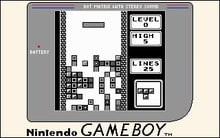 While not a concept that would blow away today's gamers, it was certainly enough in 1989, when Tetris was released as the flagship title for Nintendo's handheld video game console, the Game Boy. This maddening killer app sold more than a few Game Boys, cementing itself and Nintendo's pocket prodigy in the minds of gamers everywhere.
While not a concept that would blow away today's gamers, it was certainly enough in 1989, when Tetris was released as the flagship title for Nintendo's handheld video game console, the Game Boy. This maddening killer app sold more than a few Game Boys, cementing itself and Nintendo's pocket prodigy in the minds of gamers everywhere.
This is not the venue for a complete list of those inspired by Tetris; there's simply not enough room. But suffice to say, it defined the puzzle genre in its day, and it still defines it to this day: All but a few of the puzzle games released post-Tetris have used it as a design reference of some sort. Tetris set the gold standard.
 While not a concept that would blow away today's gamers, it was certainly enough in 1989, when Tetris was released as the flagship title for Nintendo's handheld video game console, the Game Boy. This maddening killer app sold more than a few Game Boys, cementing itself and Nintendo's pocket prodigy in the minds of gamers everywhere.
While not a concept that would blow away today's gamers, it was certainly enough in 1989, when Tetris was released as the flagship title for Nintendo's handheld video game console, the Game Boy. This maddening killer app sold more than a few Game Boys, cementing itself and Nintendo's pocket prodigy in the minds of gamers everywhere.This is not the venue for a complete list of those inspired by Tetris; there's simply not enough room. But suffice to say, it defined the puzzle genre in its day, and it still defines it to this day: All but a few of the puzzle games released post-Tetris have used it as a design reference of some sort. Tetris set the gold standard.
Prelude's rating:


Dragon Warrior - Famicom and NES
Way back in 1986, Enix released what is, in many ways, the most influential role-playing game of all time. The game was Dragon Quest, or as it is known in the US, Dragon Warrior. Before Dragon Quest, many RPGs were overly complex, so with this game the developers aimed to create a game that would be enjoyed by young and old alike. Enix probably never knew how influential its game would be.
 Although Dragon Warrior did not find a US release until 1989 on the NES, the game has left many marks that can still be seen on nearly every RPG released today. The simple bitmapped and tiled 2D graphics of Dragon Warrior have been used in countless RPGs to this day. It was not until consoles began dabbling in 3D that RPGs moved away from this graphical approach. The classic top-down perspective is nearly always a dead giveaway of an RPG.
Although Dragon Warrior did not find a US release until 1989 on the NES, the game has left many marks that can still be seen on nearly every RPG released today. The simple bitmapped and tiled 2D graphics of Dragon Warrior have been used in countless RPGs to this day. It was not until consoles began dabbling in 3D that RPGs moved away from this graphical approach. The classic top-down perspective is nearly always a dead giveaway of an RPG.
The Dragon Warrior series has had a huge effect not only on Japanese RPGs but also on Japanese culture in general. Even today, the release of a new chapter in the series is a major event. Fans of the series will line up for days in advance, forsaking school and work just to be one of the first to get their hands on the game.
 Although Dragon Warrior did not find a US release until 1989 on the NES, the game has left many marks that can still be seen on nearly every RPG released today. The simple bitmapped and tiled 2D graphics of Dragon Warrior have been used in countless RPGs to this day. It was not until consoles began dabbling in 3D that RPGs moved away from this graphical approach. The classic top-down perspective is nearly always a dead giveaway of an RPG.
Although Dragon Warrior did not find a US release until 1989 on the NES, the game has left many marks that can still be seen on nearly every RPG released today. The simple bitmapped and tiled 2D graphics of Dragon Warrior have been used in countless RPGs to this day. It was not until consoles began dabbling in 3D that RPGs moved away from this graphical approach. The classic top-down perspective is nearly always a dead giveaway of an RPG.The Dragon Warrior series has had a huge effect not only on Japanese RPGs but also on Japanese culture in general. Even today, the release of a new chapter in the series is a major event. Fans of the series will line up for days in advance, forsaking school and work just to be one of the first to get their hands on the game.
Prelude's rating:


Street Fighter II: The World Warrior - Arcade
In 1990 the arcade scene was glutted with racing games, space shooters, and beat-'em-ups. But in the spring of 1991, Capcom released Street Fighter II, a one-on-one fighting game that not only revolutionized the genre, but it also changed the gaming industry forever.
 Since Capcom's incredible success with Street Fighter II, countless fighting games have been produced that use the basic ideas and even, in some cases, all of the ideas found in Street Fighter II. Some of the elements that Street Fighter II brought were simply unheard of at that time. For instance, the game was the first one-on-one fighting game to feature eight playable characters, each with his or her own unique style and abilities. Up to that point the closest thing to Street Fighter II was the original Street Fighter, which had two playable characters, special moves, life bars, and the series' basic premise. But the original game's controls were horribly inaccurate, making it next to impossible to pull off special moves when you wanted. In fact, one of the most revolutionary aspects of Street Fighter II was the game's advanced joystick and button-scanning routine, which made it possible for the arcade game to interpret the complex joystick moves and button combinations made by players. This incredibly precise and complicated control setup was the main reason people kept coming back to the arcades to play the game. You had eight characters to play with, each different enough that playing with each one was almost like playing the game for the first time. Street Fighter II's depth and precise control truly made it a game that took practice and experience.
Since Capcom's incredible success with Street Fighter II, countless fighting games have been produced that use the basic ideas and even, in some cases, all of the ideas found in Street Fighter II. Some of the elements that Street Fighter II brought were simply unheard of at that time. For instance, the game was the first one-on-one fighting game to feature eight playable characters, each with his or her own unique style and abilities. Up to that point the closest thing to Street Fighter II was the original Street Fighter, which had two playable characters, special moves, life bars, and the series' basic premise. But the original game's controls were horribly inaccurate, making it next to impossible to pull off special moves when you wanted. In fact, one of the most revolutionary aspects of Street Fighter II was the game's advanced joystick and button-scanning routine, which made it possible for the arcade game to interpret the complex joystick moves and button combinations made by players. This incredibly precise and complicated control setup was the main reason people kept coming back to the arcades to play the game. You had eight characters to play with, each different enough that playing with each one was almost like playing the game for the first time. Street Fighter II's depth and precise control truly made it a game that took practice and experience.
Many games since Street Fighter II have taken the fighting-game genre in new directions, but all owe their roots to the game that set all standards. Even more than 10 years later in this new era of 3D gaming, you can still see traces of Street Fighter II in fighting games.
 Since Capcom's incredible success with Street Fighter II, countless fighting games have been produced that use the basic ideas and even, in some cases, all of the ideas found in Street Fighter II. Some of the elements that Street Fighter II brought were simply unheard of at that time. For instance, the game was the first one-on-one fighting game to feature eight playable characters, each with his or her own unique style and abilities. Up to that point the closest thing to Street Fighter II was the original Street Fighter, which had two playable characters, special moves, life bars, and the series' basic premise. But the original game's controls were horribly inaccurate, making it next to impossible to pull off special moves when you wanted. In fact, one of the most revolutionary aspects of Street Fighter II was the game's advanced joystick and button-scanning routine, which made it possible for the arcade game to interpret the complex joystick moves and button combinations made by players. This incredibly precise and complicated control setup was the main reason people kept coming back to the arcades to play the game. You had eight characters to play with, each different enough that playing with each one was almost like playing the game for the first time. Street Fighter II's depth and precise control truly made it a game that took practice and experience.
Since Capcom's incredible success with Street Fighter II, countless fighting games have been produced that use the basic ideas and even, in some cases, all of the ideas found in Street Fighter II. Some of the elements that Street Fighter II brought were simply unheard of at that time. For instance, the game was the first one-on-one fighting game to feature eight playable characters, each with his or her own unique style and abilities. Up to that point the closest thing to Street Fighter II was the original Street Fighter, which had two playable characters, special moves, life bars, and the series' basic premise. But the original game's controls were horribly inaccurate, making it next to impossible to pull off special moves when you wanted. In fact, one of the most revolutionary aspects of Street Fighter II was the game's advanced joystick and button-scanning routine, which made it possible for the arcade game to interpret the complex joystick moves and button combinations made by players. This incredibly precise and complicated control setup was the main reason people kept coming back to the arcades to play the game. You had eight characters to play with, each different enough that playing with each one was almost like playing the game for the first time. Street Fighter II's depth and precise control truly made it a game that took practice and experience.Many games since Street Fighter II have taken the fighting-game genre in new directions, but all owe their roots to the game that set all standards. Even more than 10 years later in this new era of 3D gaming, you can still see traces of Street Fighter II in fighting games.
Prelude's rating:


Virtua Racing - Arcade
Virtua Racing, or perhaps more specifically, Sega's Model 1 hardware, was absolutely essential to modern gaming. It wasn't the first fully polygonal game on the market but along with Virtua Fighter, Sega's 1993 release on the same hardware, it introduced the concept of polygonal graphics to the masses.
 By today's standards, these early games are merely a blocky, ugly mess. But back then, the not-so-round wheels on your F-1 car looked pretty realistic. Polygonal characters let developers better display motion-captured data, so the mo-cap business was given a huge boost by polygonal gaming, and realistic motion in games became, well, a reality.
By today's standards, these early games are merely a blocky, ugly mess. But back then, the not-so-round wheels on your F-1 car looked pretty realistic. Polygonal characters let developers better display motion-captured data, so the mo-cap business was given a huge boost by polygonal gaming, and realistic motion in games became, well, a reality.
The 3D hardware used to power Sega's Model 1 games gave way to continually more advanced 3D hardware--a sort of arms race that continues to this very day. Sega went on to create Model 2 hardware for games like Virtua Fighter 2, and the console market began to revolve around 3D performance as well. The Saturn was the first console to launch with polygonal gaming in mind--well, unless you count the Vectrex's simple, vector-based games. Soon after, the PlayStation was released, and the rest is, as they say, history.
 By today's standards, these early games are merely a blocky, ugly mess. But back then, the not-so-round wheels on your F-1 car looked pretty realistic. Polygonal characters let developers better display motion-captured data, so the mo-cap business was given a huge boost by polygonal gaming, and realistic motion in games became, well, a reality.
By today's standards, these early games are merely a blocky, ugly mess. But back then, the not-so-round wheels on your F-1 car looked pretty realistic. Polygonal characters let developers better display motion-captured data, so the mo-cap business was given a huge boost by polygonal gaming, and realistic motion in games became, well, a reality.The 3D hardware used to power Sega's Model 1 games gave way to continually more advanced 3D hardware--a sort of arms race that continues to this very day. Sega went on to create Model 2 hardware for games like Virtua Fighter 2, and the console market began to revolve around 3D performance as well. The Saturn was the first console to launch with polygonal gaming in mind--well, unless you count the Vectrex's simple, vector-based games. Soon after, the PlayStation was released, and the rest is, as they say, history.
Resident Evil - PlayStation
Mention the words survival-horror, and Capcom's Resident Evil games come to mind. Of course, games like the original PC version of Alone in the Dark pioneered the early years of the genre, but it was the first Resident Evil that brought survival-horror to the masses. In that sense, Capcom's Resident Evil exerted its influence by taking the existing recipe for survival-horror games, expanding on it, and appreciably improving on the formula. If you were to read in a review that a certain game controls like Resident Evil, you'd know exactly what the writer meant. The inventory system, the strictly B-movie scripts, the varied zombie designs, and the eerie, dark look of the Resident Evil games should be familiar to any self-respecting fan of video games. However, the influence exerted by Resident Evil on the broad gaming realm extends much further than its signature survival-horror gameplay and visual style.
 The original Resident Evil was also one of the first games to introduce actual cinematic video footage into games. Those who have played the first Resident Evil game will recall the introductory sequence that showed actual live-action footage. Granted, the grainy live-action introduction in the original Resident Evil was a little campy and added fuel to the criticisms of the game's B-movie feel, but it also helped inspire other producers, including Resident Evil creator Shinji Mikami himself, to include more cinematic story elements in games.
The original Resident Evil was also one of the first games to introduce actual cinematic video footage into games. Those who have played the first Resident Evil game will recall the introductory sequence that showed actual live-action footage. Granted, the grainy live-action introduction in the original Resident Evil was a little campy and added fuel to the criticisms of the game's B-movie feel, but it also helped inspire other producers, including Resident Evil creator Shinji Mikami himself, to include more cinematic story elements in games.
 The original Resident Evil was also one of the first games to introduce actual cinematic video footage into games. Those who have played the first Resident Evil game will recall the introductory sequence that showed actual live-action footage. Granted, the grainy live-action introduction in the original Resident Evil was a little campy and added fuel to the criticisms of the game's B-movie feel, but it also helped inspire other producers, including Resident Evil creator Shinji Mikami himself, to include more cinematic story elements in games.
The original Resident Evil was also one of the first games to introduce actual cinematic video footage into games. Those who have played the first Resident Evil game will recall the introductory sequence that showed actual live-action footage. Granted, the grainy live-action introduction in the original Resident Evil was a little campy and added fuel to the criticisms of the game's B-movie feel, but it also helped inspire other producers, including Resident Evil creator Shinji Mikami himself, to include more cinematic story elements in games.
Super Mario 64 - Nintendo 64
Back in 1996, the video game industry was in a major transition period. While Nintendo and Sega were rolling in the success of their NES and Genesis consoles respectively, Sony entered the market with its little-console-that-could, the PlayStation. The early PlayStation games dabbled in 3D graphics with varying success, but Nintendo promised that the next Mario game would be the first game to truly master the third dimension. Almost a year to the day after the PlayStation launch, Nintendo released its Nintendo 64 console with just two games: Pilotwings 64 and what is considered by many to still be one of the best 3D games ever created, Super Mario 64.
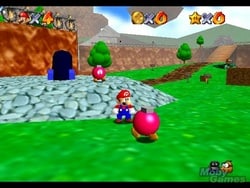 The Nintendo 64's controller was designed around the game, and the N64's analog stick brought new levels of gameplay that previously had only been prophesied. Nudging the analog stick made Mario tiptoe, holding it halfway made him walk, and pushing it to the hilt would cause Mario to run. While the concept sounds simplistic now, in 1996 this was a major innovation.
The Nintendo 64's controller was designed around the game, and the N64's analog stick brought new levels of gameplay that previously had only been prophesied. Nudging the analog stick made Mario tiptoe, holding it halfway made him walk, and pushing it to the hilt would cause Mario to run. While the concept sounds simplistic now, in 1996 this was a major innovation.
Nintendo basically set the standards for how 3D space would be navigated within video games with Super Mario 64. In addition to being an actual in-game character, the camera could be controlled in such a way that it became a part of the gameplay and not an obtrusive annoyance. In fact, smoothly swinging the camera as Mario advanced through the levels became an art form. Super Mario 64 made using the camera a fun experience: You could use it to show the action, which made gameplay easier, or you could view the game through Mario's eyes.
Besides the obvious leap from 2D sprites to polygonal 3D environments, Super Mario 64 was the first console game to use several graphical tricks that are now commonplace in many 3D console games. Particle effects were used to simulate dust and smoke, transparency routines simulated liquid substances, and reflections were used to illustrate mirrors, marble floors, and the surface of water.
 The Nintendo 64's controller was designed around the game, and the N64's analog stick brought new levels of gameplay that previously had only been prophesied. Nudging the analog stick made Mario tiptoe, holding it halfway made him walk, and pushing it to the hilt would cause Mario to run. While the concept sounds simplistic now, in 1996 this was a major innovation.
The Nintendo 64's controller was designed around the game, and the N64's analog stick brought new levels of gameplay that previously had only been prophesied. Nudging the analog stick made Mario tiptoe, holding it halfway made him walk, and pushing it to the hilt would cause Mario to run. While the concept sounds simplistic now, in 1996 this was a major innovation.Nintendo basically set the standards for how 3D space would be navigated within video games with Super Mario 64. In addition to being an actual in-game character, the camera could be controlled in such a way that it became a part of the gameplay and not an obtrusive annoyance. In fact, smoothly swinging the camera as Mario advanced through the levels became an art form. Super Mario 64 made using the camera a fun experience: You could use it to show the action, which made gameplay easier, or you could view the game through Mario's eyes.
Besides the obvious leap from 2D sprites to polygonal 3D environments, Super Mario 64 was the first console game to use several graphical tricks that are now commonplace in many 3D console games. Particle effects were used to simulate dust and smoke, transparency routines simulated liquid substances, and reflections were used to illustrate mirrors, marble floors, and the surface of water.
Final Fantasy VII - PlayStation
There is no doubt that games like Dragon Warrior and Final Fantasy for the NES have defined the structure that turned-based role-playing games follow today. And while hard-core gamers have accepted RPGs into their homes for more than a decade now, it took Final Fantasy VII 's extraordinary CG sequences, A-plus quality graphics, outstanding soundtrack, and a great advertising campaign for the genre to finally be accepted into the homes of casual gamers in the US.
 To create a game of Final Fantasy VII's magnitude, Square gave it an overzealous budget exceeding $30 million--the largest budget ever for a game at the time. With this money, a team of more than 120 artists was formed to create a game with graphics that would be better than anything ever seen before and with CG sequences that would blow people away. With the help of the huge art team, along with Nobuo Uematsu's work in the music department, Square implemented the CG sequences and the gameplay in a fashion that no gamer had ever seen before. As Andrew Vestal reports in GameSpot's History of Final Fantasy, "Final Fantasy VII integrates the FMV scenes directly into the gameplay, creating a nonstop visual feast for the player. Interwoven with an excellent musical score of more than 100 tunes and a complex and mature plot, Final Fantasy VII may well be the first 'interactive movie' that's actually enjoyable to play."
To create a game of Final Fantasy VII's magnitude, Square gave it an overzealous budget exceeding $30 million--the largest budget ever for a game at the time. With this money, a team of more than 120 artists was formed to create a game with graphics that would be better than anything ever seen before and with CG sequences that would blow people away. With the help of the huge art team, along with Nobuo Uematsu's work in the music department, Square implemented the CG sequences and the gameplay in a fashion that no gamer had ever seen before. As Andrew Vestal reports in GameSpot's History of Final Fantasy, "Final Fantasy VII integrates the FMV scenes directly into the gameplay, creating a nonstop visual feast for the player. Interwoven with an excellent musical score of more than 100 tunes and a complex and mature plot, Final Fantasy VII may well be the first 'interactive movie' that's actually enjoyable to play."
 While trying to take the presentation of RPGs to a whole new level, Square had to make sure that the storyline and the gameplay mechanics were set up in a way that both casual gamers and hard-core gamers would enjoy--and it did just that. With its several highs and lows, many consider the storyline found in Final Fantasy VII to be the most dramatic one ever found in a video game. And, along with its entertaining "Materia" gameplay system, Final Fantasy VII was a game that was destined to be enjoyed by the mass market.
While trying to take the presentation of RPGs to a whole new level, Square had to make sure that the storyline and the gameplay mechanics were set up in a way that both casual gamers and hard-core gamers would enjoy--and it did just that. With its several highs and lows, many consider the storyline found in Final Fantasy VII to be the most dramatic one ever found in a video game. And, along with its entertaining "Materia" gameplay system, Final Fantasy VII was a game that was destined to be enjoyed by the mass market.
Final Fantasy VII made gaming history with its mass-market penetration. Because of it, publishers are bringing RPGs to the US in large numbers, allowing casual gamers here to finally get their hands on what hard-core RPGs fans have enjoyed for years.
 To create a game of Final Fantasy VII's magnitude, Square gave it an overzealous budget exceeding $30 million--the largest budget ever for a game at the time. With this money, a team of more than 120 artists was formed to create a game with graphics that would be better than anything ever seen before and with CG sequences that would blow people away. With the help of the huge art team, along with Nobuo Uematsu's work in the music department, Square implemented the CG sequences and the gameplay in a fashion that no gamer had ever seen before. As Andrew Vestal reports in GameSpot's History of Final Fantasy, "Final Fantasy VII integrates the FMV scenes directly into the gameplay, creating a nonstop visual feast for the player. Interwoven with an excellent musical score of more than 100 tunes and a complex and mature plot, Final Fantasy VII may well be the first 'interactive movie' that's actually enjoyable to play."
To create a game of Final Fantasy VII's magnitude, Square gave it an overzealous budget exceeding $30 million--the largest budget ever for a game at the time. With this money, a team of more than 120 artists was formed to create a game with graphics that would be better than anything ever seen before and with CG sequences that would blow people away. With the help of the huge art team, along with Nobuo Uematsu's work in the music department, Square implemented the CG sequences and the gameplay in a fashion that no gamer had ever seen before. As Andrew Vestal reports in GameSpot's History of Final Fantasy, "Final Fantasy VII integrates the FMV scenes directly into the gameplay, creating a nonstop visual feast for the player. Interwoven with an excellent musical score of more than 100 tunes and a complex and mature plot, Final Fantasy VII may well be the first 'interactive movie' that's actually enjoyable to play."  While trying to take the presentation of RPGs to a whole new level, Square had to make sure that the storyline and the gameplay mechanics were set up in a way that both casual gamers and hard-core gamers would enjoy--and it did just that. With its several highs and lows, many consider the storyline found in Final Fantasy VII to be the most dramatic one ever found in a video game. And, along with its entertaining "Materia" gameplay system, Final Fantasy VII was a game that was destined to be enjoyed by the mass market.
While trying to take the presentation of RPGs to a whole new level, Square had to make sure that the storyline and the gameplay mechanics were set up in a way that both casual gamers and hard-core gamers would enjoy--and it did just that. With its several highs and lows, many consider the storyline found in Final Fantasy VII to be the most dramatic one ever found in a video game. And, along with its entertaining "Materia" gameplay system, Final Fantasy VII was a game that was destined to be enjoyed by the mass market.Final Fantasy VII made gaming history with its mass-market penetration. Because of it, publishers are bringing RPGs to the US in large numbers, allowing casual gamers here to finally get their hands on what hard-core RPGs fans have enjoyed for years.
Prelude's rating:



15 Most Influentical Games of All Time
--------------------------------------
(from Gamespot.com special article)
An influential game is much more than the inclusion a new gameplay feature that then is duplicated in future games. An influential game must establish a paradigm that reforms entire genres or sets a precedent that is so advanced that future game developers are forced to follow it. When considering games that have been released within the last few years, it is important to separate those that were a novelty or only influenced a small sector of the video games industry from those that truly revolutionized and influenced all games.
With these prerequisites in mind, Pong is undoubtedly the most influential of all video games. It brought video games into the home for the first time and also established video games as a viable form of entertainment. Pong is the obvious first choice and therefore we've decided not to include it in our Top 15 list. You will find that our shortlist is composed primarily of older or pioneering games that were birthed in the arcades and whose concepts have withstood the test of time. There are countless modern games that will undoubtedly make the list a few years from now, but it's impossible to predict if features that we've found innovative in recent years will ever catch on with the mass market.
So here they are--our picks for the 15 most influential games of all time organized by date of release.
Added to
People who voted for this also voted for
Most Important Games of all Time
Greatest 100 Video Games
A Rainbow of Movies I - Red
Favorite Video Games (everyone should have played)
Favorite Boss Fights
Classical Music in Games
Slow-Mo \ Bullet Time Games
...and I feel fine!
Arcade
Banned, Burned, Censored
RPG World: Xbox Edition
Genesis Games - ranked by preference
2010s Games
30 Films about... Drag & Cross-dressing
Games of 1992 - ranked by preference
More lists from Prelude
Top Rated Xbox360 Games * TOP 50
Wii MotionPlus Capable Games
Top Box Office Hits (Adjusted for Inflation)
Casual PC Gaming
'Lock On!' -- Modern Air Combat Sims
Wolfenstein series
Warlords series
 Login
Login

 111
111
 7.1
7.1
 0
0
